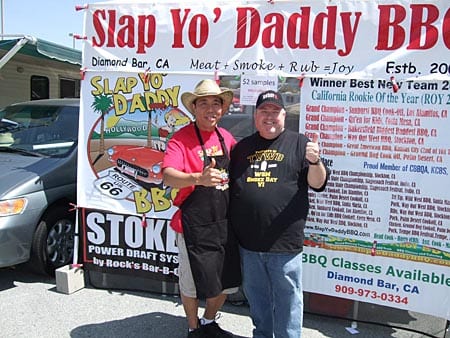Video: Don’t Season Your New Weber Smokey Mountain Cooker
The title of the video spoils the plot!
Congratulations! The UPS man delivered your new Weber Smokey Mountain Cooker today—the one you bought using the Amazon link on this website. You ripped open the box like a kid on Christmas morning and assembled it in just 20 minutes.
So let’s fire-up this bad boy and cook us some chicken & ribs, or maybe a couple of pork butts!
But Wait…Shouldn’t I Season My New WSM Before Using It?
After all, that’s what the “big boys” do with their custom-built barbecue rigs, right?
I am here to tell you that…wait for it…
No, you don’t have to season your new Weber Smokey Mountain Cooker before you start cooking with it.
Why do the “big boys” rub down the inside of their pits with peanut oil or bacon grease and fire them up to season them? Because their pits are made of raw steel, and much like a cast iron skillet, that raw steel will rust without a protective coating of seasoning.
Your shiny, new Weber Bullet is made of steel with a porcelain enamel finish inside and out. If the custom-built pit is like a cast iron skillet, the WSM is like a piece of Le Creuset cookware—it doesn’t need seasoning and will provide many years of excellent service without rusting.
But Wait…I Heard The WSM Runs Hot When New. That Means I Should Season It, Right?
Years ago, Weber used to say that the WSM may run up to 50°F hotter when brand new, due to the shiny interior surface reflecting heat back into the cooker. After a few cooks, a layer of smoke and grease would “season” the interior, making it less reflective and causing it to absorb more heat and radiate it out of the cooker, resulting in lower cooker temperatures.
Weber no longer makes this “50°F hotter” claim, and many people say they don’t notice such an effect in their new WSM. Don’t be overly concerned about this during your first few cooking sessions. If you experience high temps during your first couple of cooks, be patient and wait until you’ve got a nice coating of smoke and grease on the interior surfaces before proceeding to other remedies.
Besides, 50°F is just not that big a deal when it comes to backyard barbecue. If your new Weber Bullet is running 275°F instead of 225°F, you’re still operating at a good barbecuing temperature. Anything in the range of 225-275°F, or even as high as 300°F, is fine, especially during the first 2-3 runs with your new cooker.
So I say, just start cooking with and enjoying your new WSM right away.
But Wait…Shouldn’t I Burn-Out The Scary Manufacturing Residue Before Using My WSM?
Do you see any scary manufacturing residue inside your new Weber Bullet? No, because it’s not there. The worst I’ve ever seen is dust from the cardboard packaging. Grab a damp cloth and wipe it off.
But Wait…Shouldn’t I Get The Hang Of Operating My New WSM Before Cooking Any Meat?
OK, this may be a good reason to fire-up your Weber Bullet without actually cook anything. Leave the top vent fully open and play with the bottom vent settings to increase and decrease the cooker temperature. You’ll get a sense of just how easy it is to control the temperature in your new WSM.
I Still Want To Season My New WSM!
If you insist on seasoning your new WSM, follow these tips from Harry Soo, the pitmaster of the Slap Yo’ Daddy Barbecue Team. Harry knows a thing or two about Weber Bullets—he uses them exclusively in competition.
As you can imagine, barbecue competitors like Harry are looking for every advantage they can get over their competition, and they want precise temperature control in their cookers. That’s why Harry seasons his new WSMs and uses an automatic temperature control system during competitions.
I think this seasoning approach is over-the-top for a backyard barbecuer like me, but you be the judge and decide for yourself.
Seasoning A WSM For Competition
- Wrap the water pan with aluminum foil for easy clean-up later—but do not add any water to the pan.
- Fill the charcoal chamber to the top with hot Kingsford Charcoal Briquets. Open all the vents fully and let the cooker run as hot as possible. This is Harry’s “burn off any manufacturing residue” step.
- When the fire goes out and the ashes are cool, dump out the ashes.
- Fill the charcoal chamber about 1/2 full with unlit Kingsford Charcoal Briquets, then use a Weber chimney starter to light about 1/2 chimney (approximately 50 briquettes) and spread the hot coals over the unlit ones. Open the top vent fully and adjust the bottom vents to achieve an operating temperature of 275°F.
- Put the top cooking grate in place and load it up with any kind of meat that will generate grease. Harry suggests bacon, pork fat, chicken parts, or any fatty scraps you can find. Place two fist-sized chunks of smoke wood on the fire to generate smoke.
- When the fire goes out and the ashes are cool, discard the meat and dump out the ashes.
- Repeat the greasy meat cooking process at least twice before barbecuing any meat on your WSM that you want to eat.







